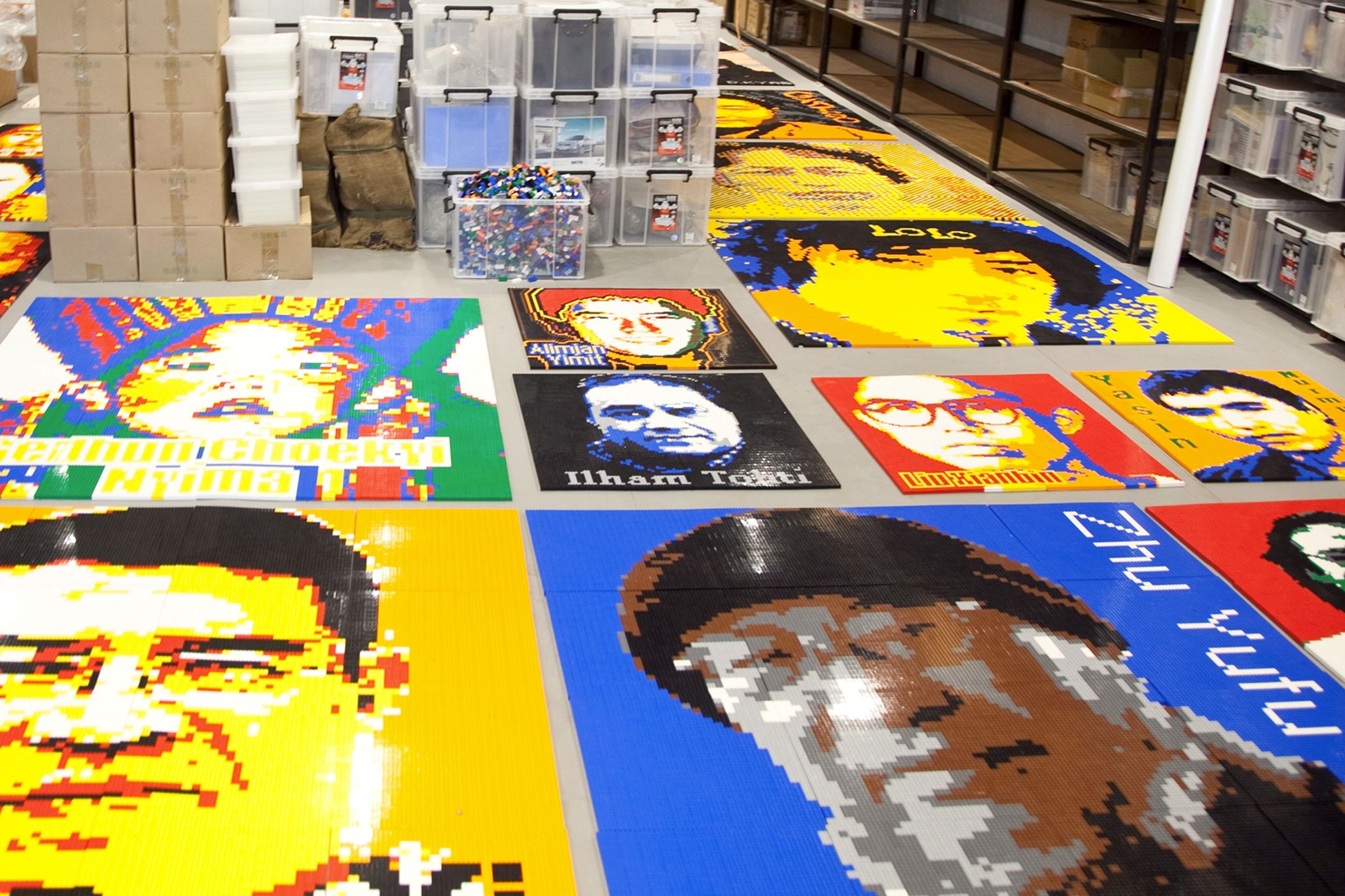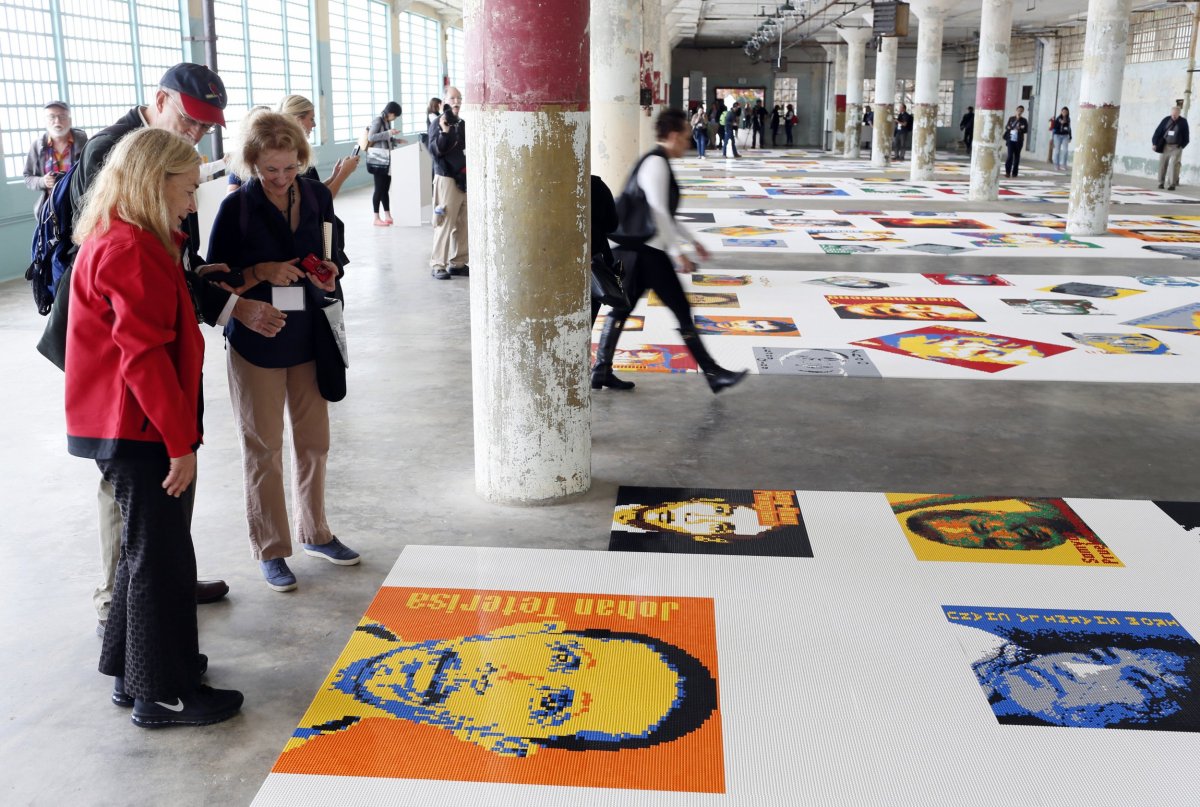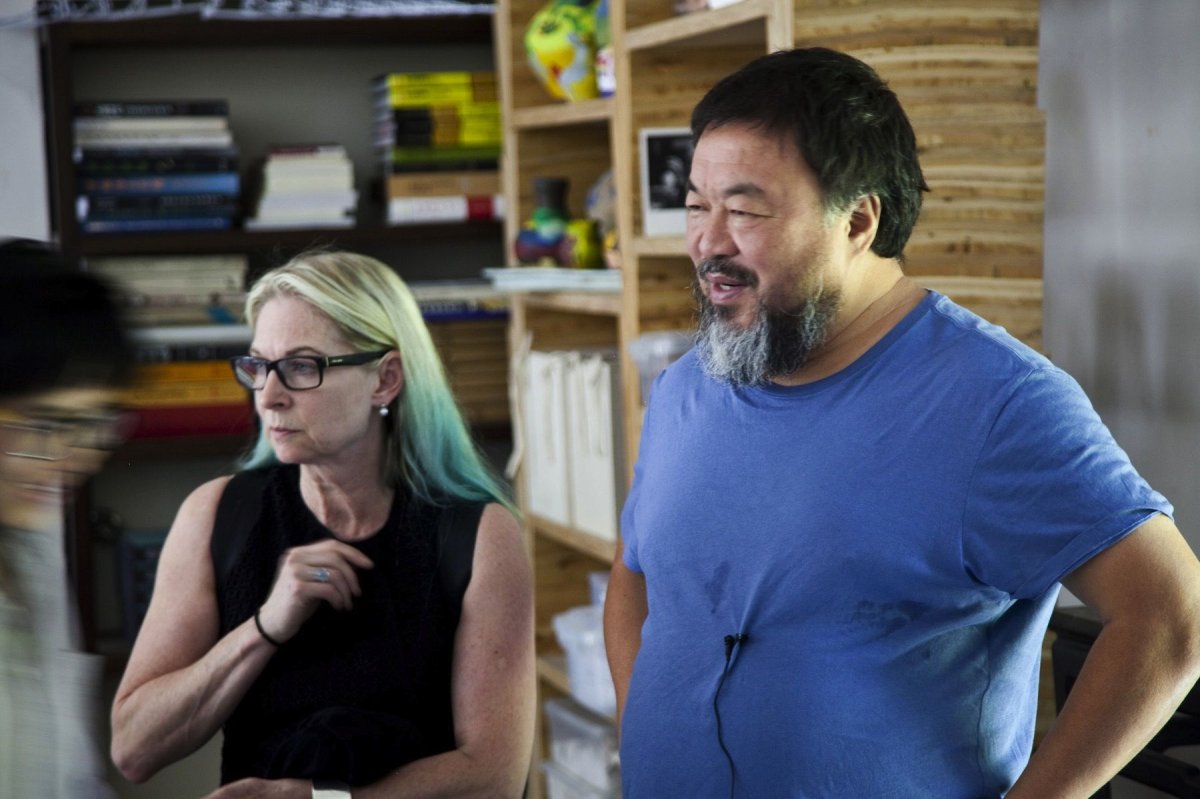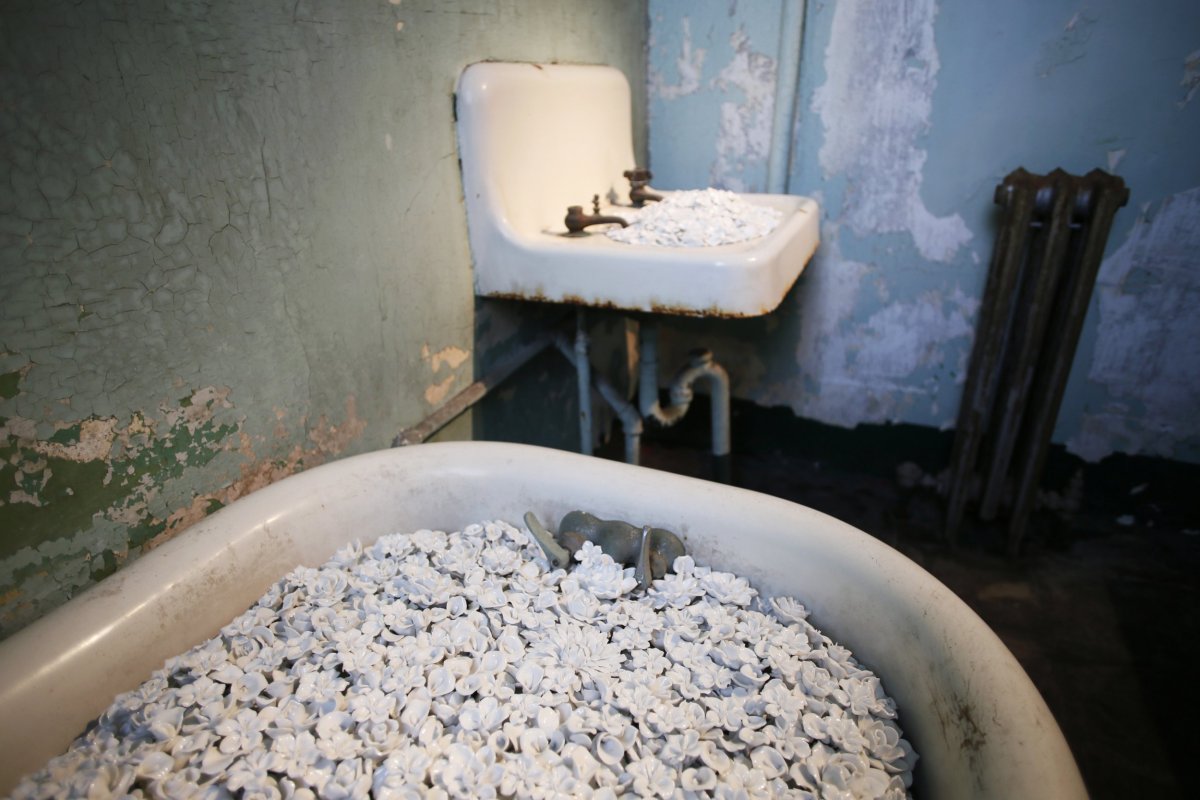
When Tim Hallman received a request for volunteers to help assemble an exhibition of Chinese artist Ai Weiwei's work at Alcatraz, the former prison in San Francisco, he jumped at the chance.
"I knew it was going to be historic," Hallman, the director of communications and business development at the Asian Art Museum in San Francisco, tells Newsweek.
Hallman and his fellow volunteers constructed parts of Trace, one of seven installations by the Chinese dissident artist that make up a new exhibition at Alcatraz, opening to the public Saturday. Titled @Large: Ai Weiwei at Alcatraz, the exhibition is organized by the FOR-SITE Foundation, a nonprofit focused on site-specific art; the National Park Service; and the Golden Gate National Parks Conservancy. It will run through April 2015.

The exhibition will be shown on four locations at Alcatraz. The installation Trace features 176 portraits, all built using Lego bricks. Each portrait "represents an individual who has been imprisoned or exiled because of his or her beliefs, actions, or affiliations," according to a release.
Staff at the FOR-SITE Foundation led nearly 100 volunteers in assembling the exhibition in lieu of Weiwei, whose movements are restricted while his passport is being held by authorities, he told The New York Times.
When Hallman arrived at the beginning of August to volunteer, he was shown to a room with boxes stacked on top of each other and filled with multicolored Lego pieces.
It was here that Hallman first learned about Mohammed al-Roken, who is in prison in the United Arab Emirates for his work as a human rights lawyer, according to Amnesty International.
Hallman used a grid labeled with numbers and letters along each side, like coordinates, to place Legos in their designated spots on 18- by 18-inch panels, four of which would ultimately make up the portrait of al-Roken.
It was "a slowly thrilling exercise to get to know this person," Hallman says.
The collection of portraits includes household names such as Martin Luther King Jr. and Edward Snowden, along with dozens of lesser-known dissidents who have been imprisoned or exiled.

Ai Weiwei was born in Beijing in 1957. His desire to defend freedom of speech, human rights and a free press in China is rooted in his childhood, says Andreas Johnsen, director of the documentary The Fake Case and a friend of the artist.
Ai's parents were expelled from Beijing when he was a baby during a crackdown on intellectuals, and he was sent to a labor camp in rural northeastern China, according to Smithsonian magazine. He studied at the Beijing Film Academy and the Parsons School of Design in New York before returning to China in 1994.
Ai's work has often focused on honoring the lives of individuals. In 2008, he launched a citizen's investigation to compile the names of all the children who had perished in the Sichuan earthquake, in an effort to remind people they were "people with names...not just a number," says Alison Klayman, director and producer of the 2012 documentary Ai Weiwei: Never Sorry.
In 2009, he created Remembering, a work that used 9,000 backpacks to spell out a quote from a mother who lost her daughter in the earthquake: "She lived happily on this earth for seven years."
As early as the 1980s, his art "had a sense of politics to it," Melissa Chiu, museum director of the Asia Society, tells Newsweek. "But it was only around the [2008 Summer Olympics in Beijing] where his political activism really came to the fore," she says.
Ai called the 2008 Beijing Olympics a "pretend smile," according to The New York Times, and wrote in The Guardian that final medal count didn't matter.
"What counts is the tens of thousands of lives ruined because of poor construction of schools in Sichuan, because of blood sellers in Henan, because of industrial accidents in Guangdong and because of the death penalty. These are the figures that really tell the tale of our era," Ai wrote in The Guardian.
"With his critique of the Chinese government back then, he became more of a spokesperson for societal issues in China," Chiu tells Newsweek, "and his naming of the victims of the Sichuan earthquake was perhaps his first act of merging his sense of political activism with his art practice."

Ai was detained for 81 days by the Chinese government on charges of tax evasion in 2011, though he was interrogated primarily about his blog, according to The New York Times. After his release in June 2011, he was placed under house arrest for a year.
A few months after he was released from his detainment, Cheryl Haines, executive director of FOR-SITE, visited Ai at his studio in Beijing and asked what she could do to help, she tells Newsweek.
"'You can help bring my art and ideas to a broader audience,'" she recalls him saying. Her visit is when the idea for @Large took root. Haines had already had Alcatraz on her mind for a while as "a remarkable site to create a contemporary art intervention." She offered him the location, and he immediately accepted.
Haines visited several more times, bringing photos, blueprints and historical material to the artist. Ai directed the formation of @Large's installations from his studio in Beijing, reflecting on themes of basic human rights, freedom of expression, our individual responsibility in addressing these concerns, and the role communication plays in a just society, says Haines.
After his 2011 detention, Ai worked on several projects that helped him process his experience, Klayman tells Newsweek, including a series of dioramas depicting his prison cell that he presented at the Venice Biennale in 2013.
But Johnsen says Ai was thinking about themes of detention and the stifling of expression even before his own imprisonment.
"He's one of the few Chinese artists that always spoke out about how they treat artists and activists in China, and he's not afraid to do so," Johnsen tells Newsweek.
@Large's seven site-specific installations cover several spaces in Alcatraz—a former military and later maximum security prison that has since become a popular tourist site—including some rooms that are not normally open to the public.

In the prison's former hospital wing, fragile porcelain flowers fill the fixtures, overflowing from the bathtub and sink in an installation called Blossom. Illumination is set in two separate psychiatric observation cells, one playing Buddhist chants and the other a song from the Hopi tribe of Native Americans.
These are the two pieces "that in my mind that address the ideas of providing self comfort during incarceration," says Haines.
The exhibition also includes an opportunity for visitors to enter a dozen separate cells and listen to words and music by people imprisoned for "creative expression of their beliefs, as well as works created under conditions of incarceration," according to FOR-SITE.
In Yours Truly, the exhibit offers visitors the chance to write a postcard to one of the many dissidents featured in Trace, says Haines, "to let them know that they are not forgotten."
Uncommon Knowledge
Newsweek is committed to challenging conventional wisdom and finding connections in the search for common ground.
Newsweek is committed to challenging conventional wisdom and finding connections in the search for common ground.
About the writer
Stav is a general assignment staff writer for Newsweek. She received the Newswomen's Club of New York's 2016 Martha Coman Front ... Read more
To read how Newsweek uses AI as a newsroom tool, Click here.








